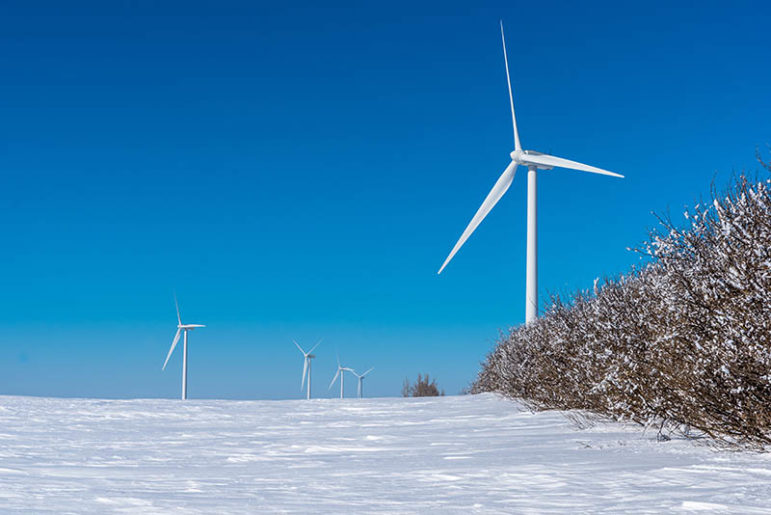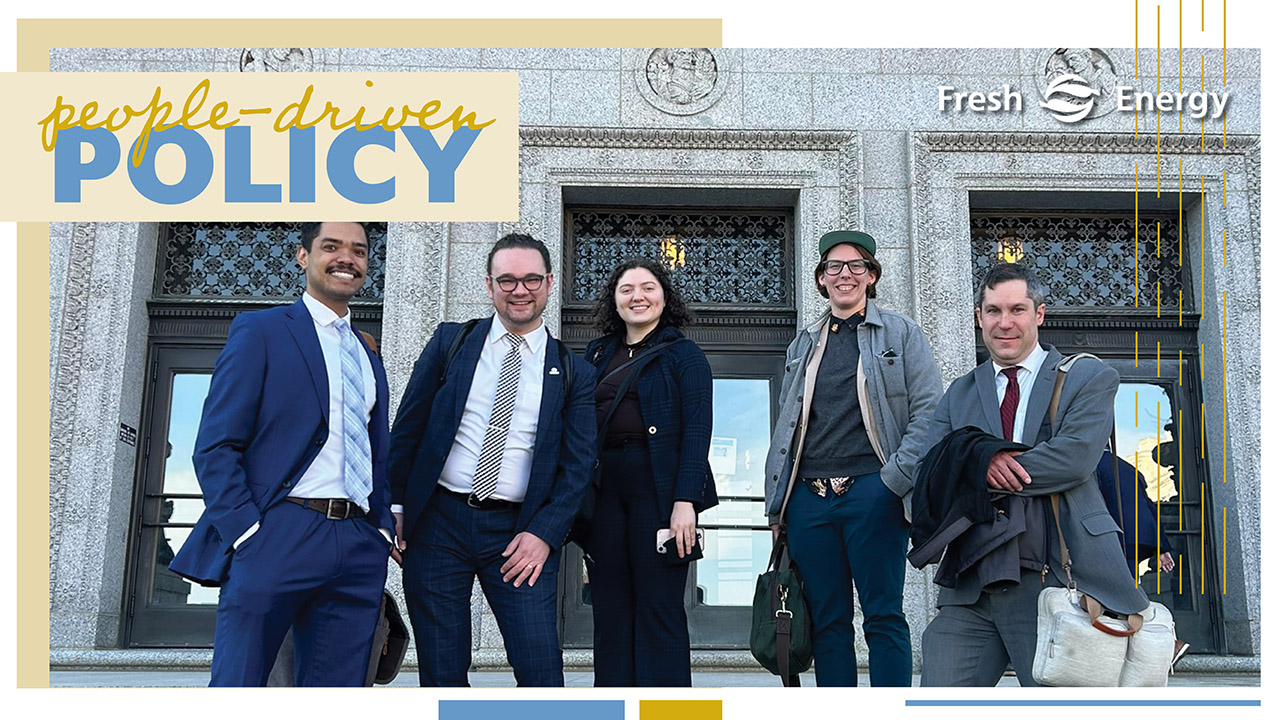
In recent days, a nearly unprecedented cold spell across much of the United States has caused enormous stress on our energy system. Millions of residents in Texas and surrounding states have had long periods without power over the past few days. Cynically, but perhaps not surprisingly, fossil fuel interests and others started political finger-pointing before the crisis even ended.
The actual situation is quite a bit more complex than opponents of clean energy are making it out to be. Issues with insufficient gas and electricity supply, which has caused large power outages in Texas, have multiple causes including gas lines and some wind turbines unexpectedly freezing, downed power lines, and huge spikes in gas prices. Here are a few myths we’re seeing appear in the news and on social media, along with the realities about how our energy system is coping with this most recent polar vortex:
Myth
Frozen wind turbines are the primary cause of power outages in Texas.
Reality
While extreme cold impacts all forms of power generation, coal and gas have been much more significantly impacted overall. Bloomberg News reported that less than 13% of the nearly 35 gigawatts of total outages seen across Texas was due to wind shutdowns. Given that Texas gets roughly 20% of its overall electricity mix from wind, this suggests wind is actually outperforming other types of generation.
Myth
Coal, oil, and gas don’t suffer from extreme cold as much as wind and solar.
Reality
Texas Governor Greg Abbot made it clear in this tweet that coal and gas are certainly not immune from cold weather impacts. And this was an understatement: In actuality, the vast majority of the current electricity generation shortfall in Texas is due to thermal generation (coal and gas) performing well short of expectations set by Texas’s grid operator. Coal piles, gas pipelines, and gas processing facilities often freeze with severe winter weather, and this polar vortex was no exception. A shortage in gas supply at the same time as higher than expected electric demand and demand for gas heating caused skyrocketing prices and made it impossible for many power plants to access fuel. See this thread from Princeton professor Jesse Jenkins for a deeper explanation.
Myth
Renewable energy mandates have made it impossible to manage the grid for reliability.
Reality
The State of Texas set a goal of generating 10,000 megawatts of renewable energy by 2025; it met that goal in 2010 and continues to add large-scale wind and solar generation every year, despite having already surpassed the renewable energy goal. A key factor that actually impacts reliability is that, unlike Minnesota, Texas operates on its own electric grid, which is essentially isolated from the rest of the continent’s power systems. Minnesota participates in the MISO market, which is interconnected with the eastern half of the U.S. and Canada, and which provides us with resilience and flexibility for accessing electricity that Texas does not enjoy.
This interconnectedness is critical to our grid’s reliability and to keeping energy costs down. While MISO has been able to facilitate enough transfers to avoid losing power in most situations thus far, it must increase its ability to share power between its states and with its neighbors so that we do not soon find ourselves in a similar situation to Texas as extreme weather events increase.
Myth
If the climate is truly warming it wouldn’t be freezing in Texas.
Reality
Extreme weather events such as the one unfolding in Texas are expected to become more and more frequent as a result of climate change. Research has found a clear connection between the polar vortex and declining sea ice in the Arctic. As climate change continues to advance, it is likely that more and more extreme weather events will continue to occur. This week’s ongoing crisis in Texas highlights the need for policymakers to focus on climate resilience now more than ever.
There is much to be learned from these unprecedented events in Texas. Long power outages during extreme cold can have devastating impacts, especially for our most vulnerable communities.
At local, state, and regional levels it’s imperative that we prepare our electric grid for extreme weather events and a changing electricity system. Fresh Energy is working in regulatory and policy spaces to ensure Minnesota builds a future-proof grid that can handle extreme weather, increased demand from beneficial electrification, and a highly renewable electricity supply. We are also working with regional partners at MISO to ensure stronger and more robust electric transmission infrastructure across the midwestern power grid. We do not need more fossil fuel power plants to have a safe and reliable power system. We need smart planning.

